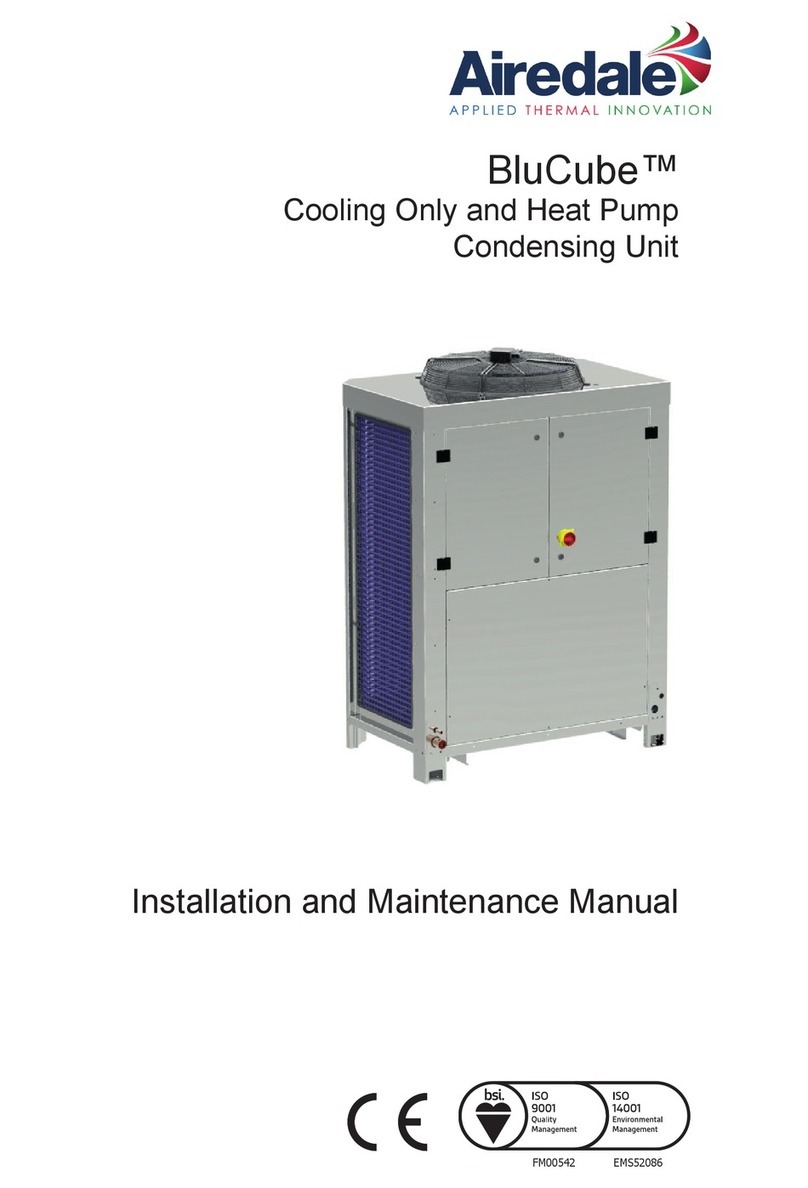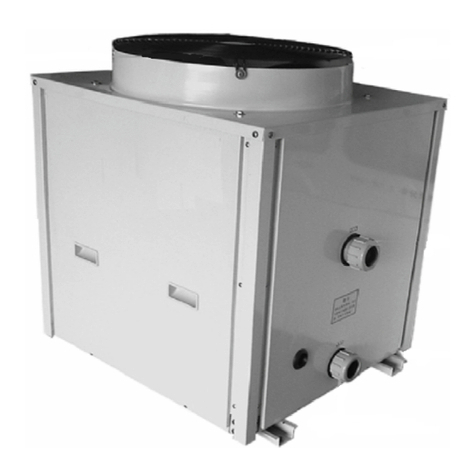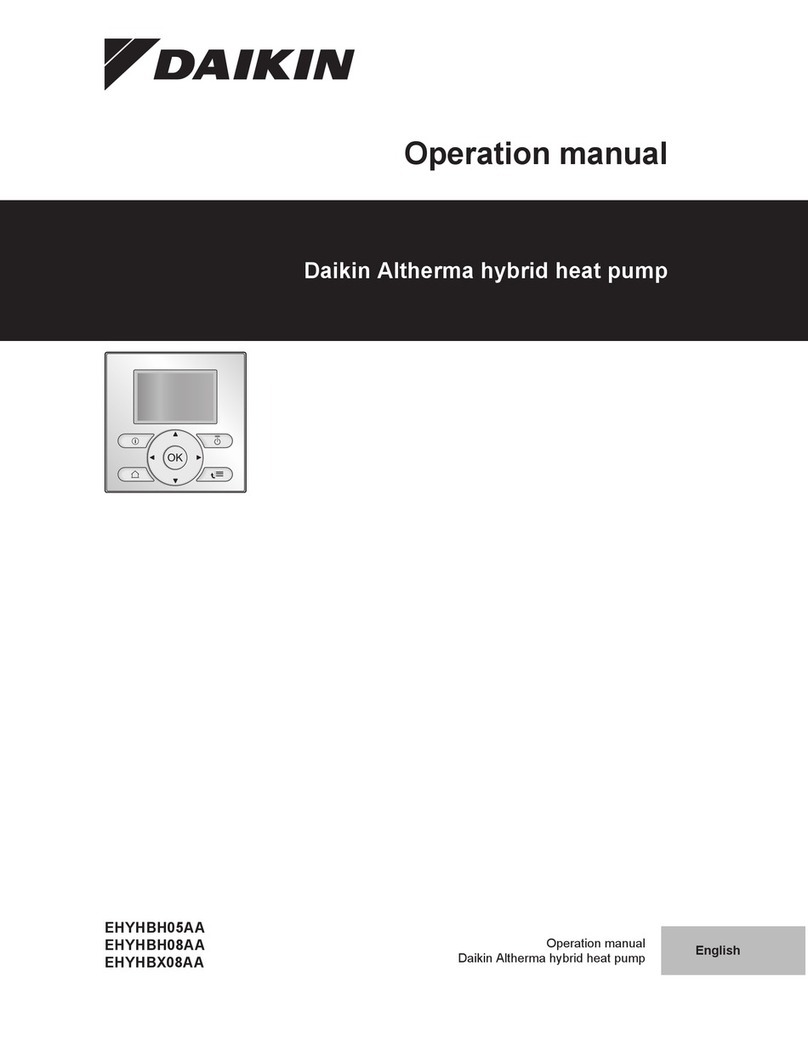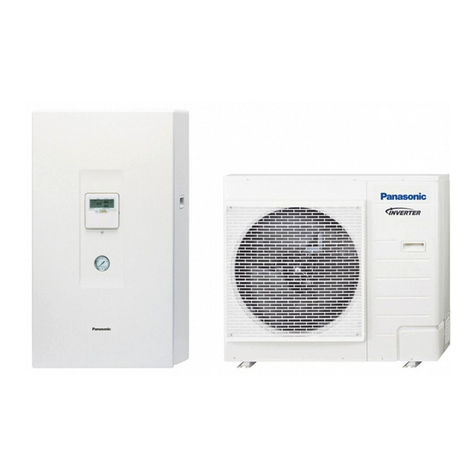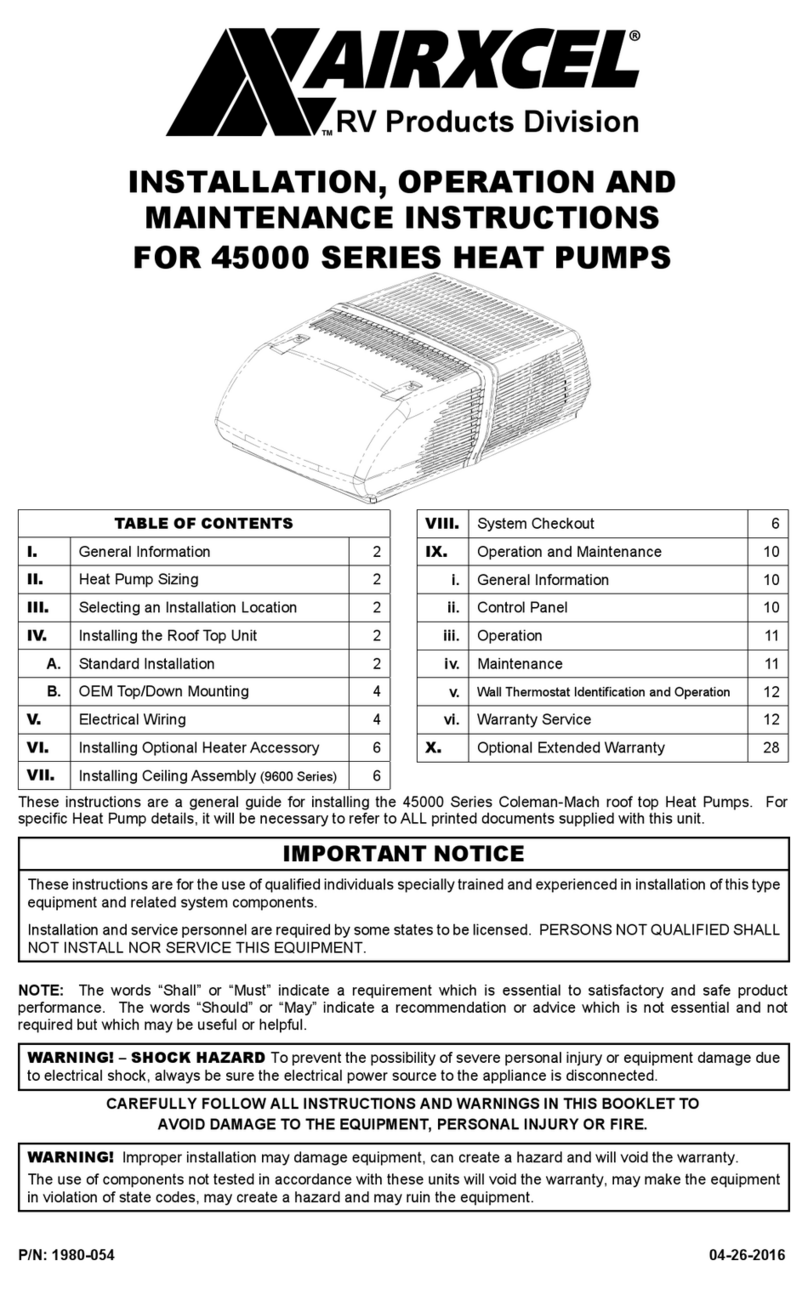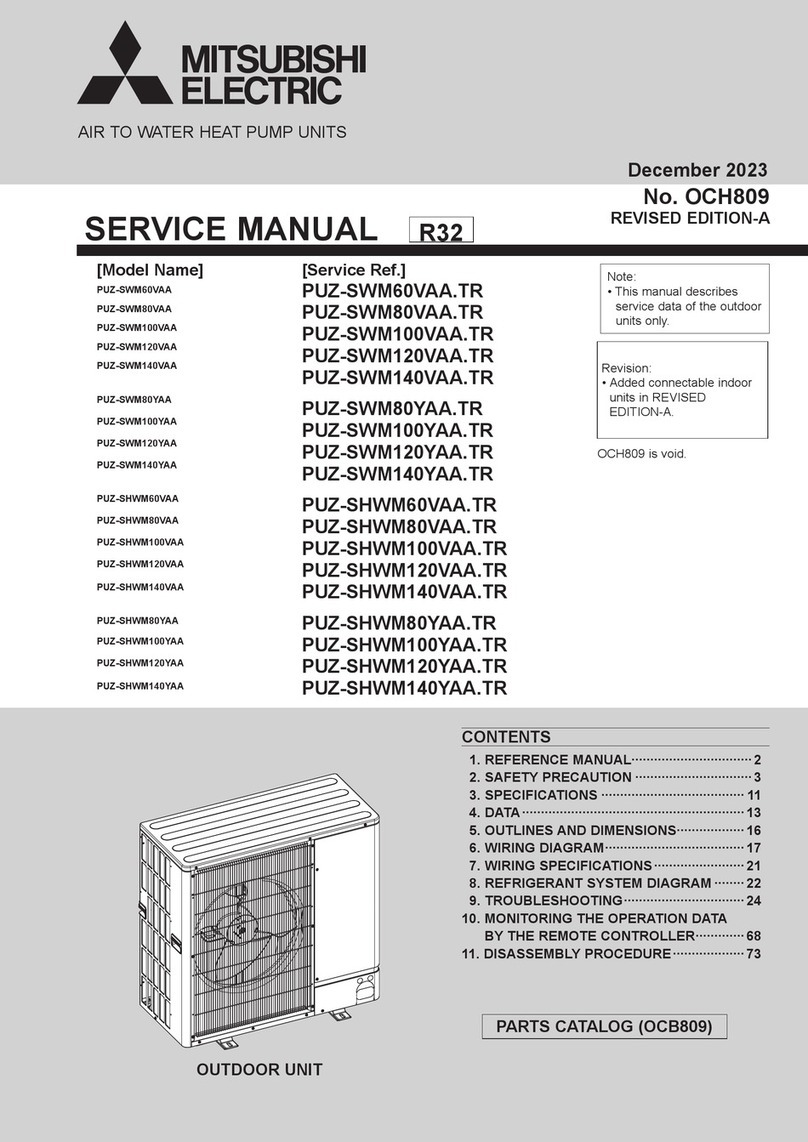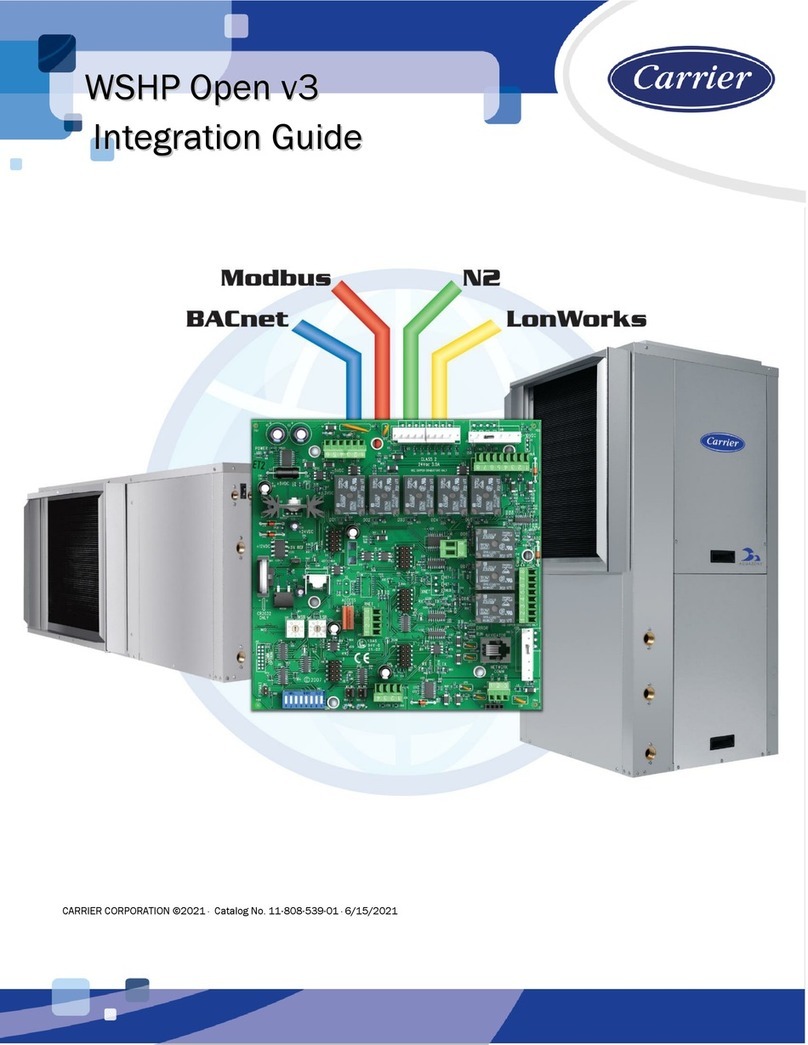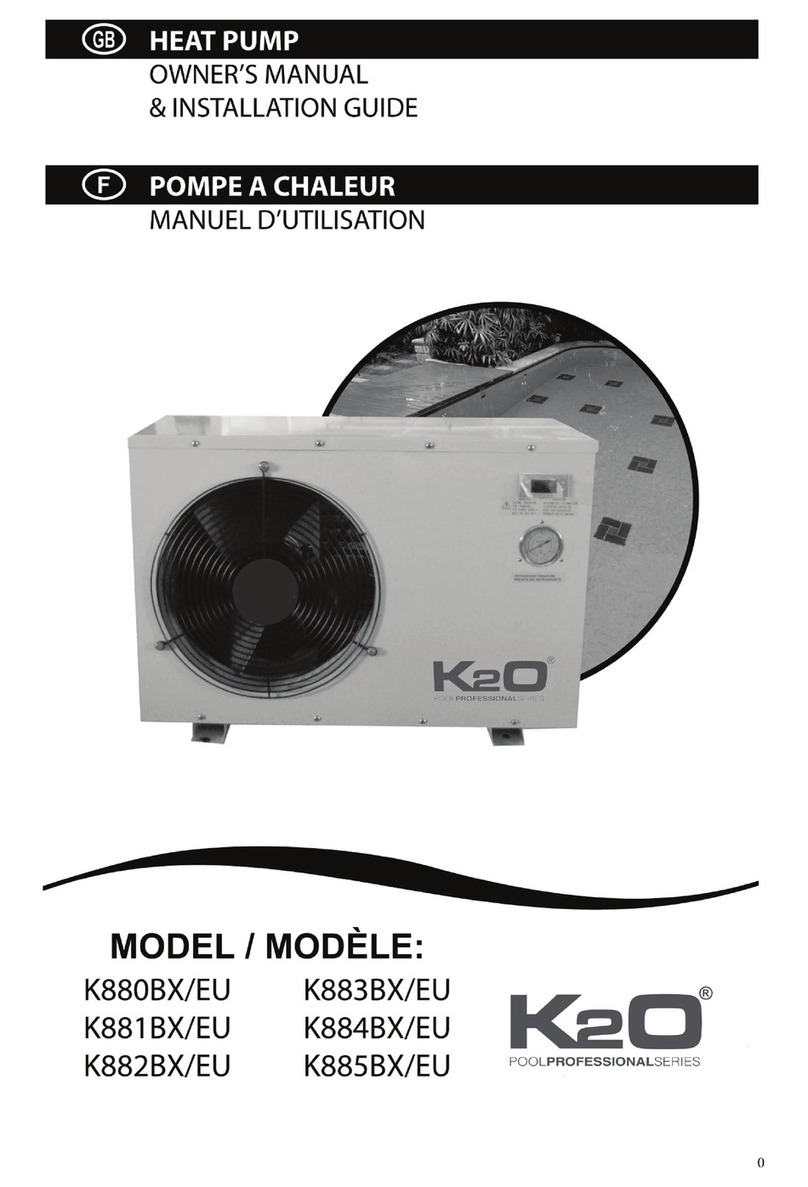
9
DEU
1. Anwendungsbereich des Kühlgerätes
Die in dieser Anleitung beschriebenen Kühlgeräte
der Serie EMO sind für die Kühlung der Innenluft
von Schaltschränken entwickelt und konstruiert,
um empndliche Bauteile vor Wärmebelastung zu
schützen. Gleichzeitig gewähren die Kühlgeräte
einen Schutzgrad von IP54 gegen das Eindringen
von Verunreinigungen und aggressiven Stoffen.
1.1 Vorgesehene Anwendung
Das Kühlgerät EMO ist folgendermassen
anzuwenden:
- zur Kühlung von Schaltschränken in Aussen-
bereichen;
- bei einer Aussentemperatur zwischen einem
Minimum von -20°C und einem Maximum von
+50°C (+55°C bei Einheiten, bei denen diese
Temperatur ausdrücklich auf demTypenschild
angegeben ist);
- bei den auf dem Typenschild am Kühlgerät und in
Kapitel 14 dieser Anleitung angegebenen Speise-
spannungen;
- weit entfernt von Wärmequellen oder warmen
Luftströmungen;
- in angemessen durchlüfteter Umgebung;
- in einem Schaltschrank mit einem Schutzgrad
von IP54 oder mehr, da sich ansonsten zu viel
Kondenswasser bilden könnte. Folglich sind
Kabeldurchführungen und andere Öffnungen im
Schrank sorgfältig abzudichten.
Für den korrekten Betrieb des Gerätes ist die
planmässige Instandhaltung regelmässig
durchzuführen (Kapitel 10). Ein nicht korrekter oder
unachtsamer Gebrauch der Einheit kann irre-
versible Schäden an dem Kühlgerät verursachen
und gefährliche Situationen herbeiführen.
1.2 Nicht vorgesehene Anwendung
Das Kühlgerät EMO darf unter folgenden
Bedingungen nicht angewandt werden:
- bei Bedingungen, die die Vorgaben aus Kapitel
1.1 nicht erfüllen;
- in Aussenumgebungen mit übermässiger
Konzentration fester und/oder aggressiver
chemischer Schadstoffe;
- bei offen stehenden Schaltschranktüren oder an
einem Schrank, der nicht den Schutzgrad von IP54
erfüllt, da sich dabei zu viel Kondenswasser bildet;
- bei eingestellten niedrigeren Temperaturen als
die Taupunkttemperatur der Umgebungsluft;
- in explosionsfähiger, aggressiver Atmosphäre
oder bei hoher Staubkonzentration oder ölhaltigen
Substanzen in der Umgebungsluft;
- in Atmosphären mit Brandgefahr;
- mit verstopftem Kondenswasserablaufschlauch
oder wenn aufgrund seines Zustandes der
korrekte Abuss des Kondenswassers nicht
möglich ist;
- ohne der vorderen Abdeckung;
- wenn der Luftein- oder -austritt durch Wände
oder zu nahe stehende Gegenstände behindert
wird. Hierzu die Mindestabstände für die
Aussenluftströme überprüfen (Abb. F.02); für die
Innenluftströme ist dagegen zu überprüfen, dass
Komponenten im Schaltschrank keine Behinde-
rung darstellen.
2. Lieferumfang
In der Verpackung sind enthalten:
1 Kühlgerät
1 Installations-, Betriebs- und Wartungsanleitung
1 Konformitätsbescheinigung CE
1 Abnahmeprüfzeugnis
1 Bohrschablone auf A4-Blatt
1 Montageset mit (F.04):
- Muttern (p.1)
- Unterlegscheiben (p.2)
- Zapfen (p.3)
1 selbstklebende Isolierung (F.04, p.4)
Bügel für das Handling (F.03)
3.Technische Entwicklung
OLAER behält sich das Recht vor, seine
Produkte und die dazugehörigen Anleitungen ohne
Vorankündigung immer auf den neuesten tech-
nischen Stand zu bringen. Dagegen kann diese
Anleitung und die dazugehörenden Produkte zum
Zeitpunkt ihres Vertriebes nicht als unangemessen
betrachtet werden, nur weil sie nicht dem oben
angeführten Stand entsprechen.
4.Technische Daten
(Abbildungen F.14 und F.15)
Die technischen Daten und das CE-Zeichen
sind auf dem am Kühlgerät angebrachten Schild
aufgeführt.
5. Handhabung und Transport
Während Transport und Lagerung muss das
Kühlgerät in der auf der Verpackung angezeigten
senkrechten Position (Abb. F. 01 ) gehalten werden
und darf keinen höherenTemperaturen als 70°C
oder niedrigeren Temperaturen als -30°C ausge-
setzt werden. Beim Empfang kontrollieren, dass
die Verpackung keine Transportschäden aufweist.
Zum Heben des Kühlgerätes unter sicheren
Bedingungen können die zwei am Oberteil des
Kühlgeräts angebrachten Hebebügel verwendet
werden (Abb. F.03).
6. Montage
Nur qualiziertes Personal ist zur Montage der
Einheit berechtigt.
Das Kühlgerät muss so montiert werden, dass
sich das Luftansaugloch zum Schrank möglichst
hoch bendet.
Sicherstellen, dass die Befestigungs- und Verbin-
dungsteile nicht an die im Schaltschrank bendli-
chen Apparaturen heranreichen.
Das Kühlgerät in senkrechter Position montie-
ren. Zugelassene max. Abweichung von der
Senkrechten 2°.
Vor jeder Arbeit im Inneren des Schaltschranks die
Stromversorgung abschalten. Das Kühlgerät ist
mittels der im mitgelieferten Standardkit enthal-
tenen Zubehörteile aussen am Schaltschrank
anzubringen.
Die notwendigen Bohrungen und Schnitte (Abb.
F.04) am Schaltschrank anbringen; verwenden Sie
dazu die mitgelieferte Bohrschablone.
Die Dichtung, falls vorgesehen, auf der Seite
des Kühlgerätes anbringen, die mit dem Schrank
verbunden werden soll, und das angegebene
Montageschema (Abb. F.04) befolgen.
7. Kondenswasserablauf
Das Kondenswasser, das sich je nach Aussen-
temperatur und Feuchtigkeit auf dem Wärme-
tauscher, der die Luft im Schaltschrank abkühlt,
bildet, ist ein normales Phänomen und bedeutet,
dass das Kühlgerät normal funktioniert. Das
Kondenswasser wird über ein Rohr unten aus
dem Kühlgerät herausgeführt (Abbildung 11.B).
An diesem Ablauf muss ein durchsichtiger
Plastikschlauch befestigt werden, um das Kon-
denswasser in einen Bereich abzuführen, in dem
niemand darauf ausrutschen kann. Sicherstellen,
dass das Kondenswasser hinderungsfrei ablaufen
kann. Der Ablaufschlauch sollte nicht mehr als
0,5 m horizontal oder in Gegenneigung verlaufen;
ebenso sollte die Bildung von ungewollten Bögen
vermieden werden (Abb. F.07). Das Schlauchen-
de des Kondenswasserablaufschlauches muss
immer frei sein und darf niemals eintauchen, d.h.
das Schlauchende nicht in einen Auffangbehälter
hineinlegen (Abb. F.06). Der Kondenswasserablass
kann auch an der Seite des Kühlgerätes ange-
bracht werden, indem die Position des inneren
Gummischlauchs geändert wird (Abb. F.11A).
Die Benutzung des Gerätes mit offen stehenden
Schranktüren führt zu einer überhöhten Bildung
von Kondenswasser und ist daher nicht zulässig
(Abb. F.07). Um dem vorzubeugen, empehlt sich
das Anbringen einesTürkontaktschalters, der das
Gerät bei offen stehenderTür ausschaltet (siehe
Absatz 8.2).
8. Elektroanschluss
8.1 Sicherheit
Achtung! Der Elektroanschluss darf nur von
autorisiertem Fachpersonal durchgeführt
werden.Vor dem Anschliessen die Spannung
vom Schrank abschalten. Kontrollieren, dass
die Stromversorgung des Schrankes abgeschaltet
ist und die Versorgungsspannung den auf dem
Typenschild des Kühlgerätes angegebenen Daten
entspricht. Die Stromversorgung des Kühlgerätes
muss durch angemessene träge Sicherungen
(Typ T) oder Leistungsschutzschalter mit K-Kurve
gemäss den in Tabelle F.14 aufgeführten Eichwer-
ten geschützt werden. Das Netzkabel entspre-
chend der Angaben in Abb. F.14 anschliessen. Die
Reihenfolge R-S-T einhalten. Vor Durchführung
der Abnahmeprüfungen des Schaltschranks das
Kühlgerät abklemmen.
8.2 Alarmverwaltungskabel
(Abbildung F.13)
Mittels eines 2-poligen Kabels kann an den
Drähten 80 und 81 das vom Kühlgerät
stammende Alarmsignal abgegriffen werden.
9. Erste Inbetriebnahme und Einstellung
Wurde das Gerät vor der Montage in einer
falschen Position gelagert (Abb. F. 01 ), muss man
mindestens 8 Stunden warten, bevor es in Betrieb
gesetzt wird. Ansonsten reichen 30 Minuten aus,
damit das Öl in den Kompressor zurückiessen
kann; danach kann das Kühlgerät unter Spannung
gesetzt werden. Der Ventilator, der die Luft im
Schrank ansaugt, setzt sich sofort in Bewegung
und sorgt für eine gleichmässige Schrankinnen-
temperatur.
Übersteigt diese Temperatur den auf dem Re-
gelthermostat eingestellten Grenzwert, schalten
sich der Kompressor und der Aussenluftventilator
ein und setzen den Kühlzyklus in Gang. Dieser
Kühlzyklus kommt zum Stillstand, wenn die
Innentemperatur den unteren Grenzwert des
Betriebsdifferentials erreicht, der fest auf 4 K
eingestellt ist. Der Thermostat ist werksseitig
auf 35°C eingestellt. Zum Ändern der Tempera-
tureinstellung auf denThermostat im Innenraum
des Kühlgeräts zugreifen. Die Messskala von 20
bis 46°C ermöglicht das Ändern der eingestellten
Temperatur auf den gewünschten Wert
(Abb. F.10). Um Energie zu sparen und die
Kondenswasserbildung möglichst gering zu hal-
ten, sollte man nicht unter 30°C gehen.
10.Wartung
Achtung!Vor Ausführung jeglicher Arbeiten die
Spannung vom Schaltschrank abklemmen.
Das Kühlgerät selbst ist weitgehend wartungsfrei.
Die einzigen regelmässigen Wartungsarbeiten
sind die Reinigung der Innenbauteile mit Druckluft
mit einem Druck von höchstens 4 bar (Abb. F.08)
und die regelmässige Überprüfung gemäss den
Angaben der Tabelle dieses Kapitels. Eventuell
erforderliche Reparaturen sind nur von autorisier-
tem Fachpersonal durchzuführen.
Arbeiten Häufigkeit
Kontrolle, Reinigung und eventuel-
ler Wechsel des Luftlters
Alle 2
Wochen
Wärmeaustauscher der Aussenluft
kontrollieren und evtl. reinigen.
Alle 3
Monate
Kondenswasserablauf kontrol-
lieren.
Alle 3
Monate
Die Ventilatoren auf evtl. Überhit-
zung oder übermässiges Vibrieren
kontrollieren.
Alle 6
Monate

